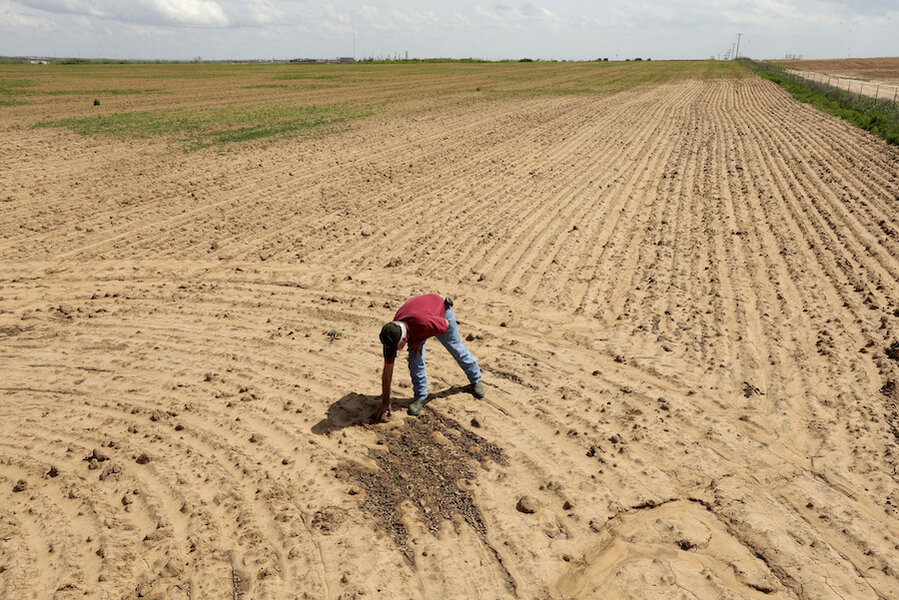Here's why industrial food is deceivingly cheap
Loading...
Conventional agriculture isn’t cheap. From the use of artificial fertilizer and pesticides to the obesity epidemic, our current food system has a number of hidden costs to the natural environment and human health, far outweighing the benefits of cheap food.
The cost of soil erosion in Brazil, for example, is US$242 million per year in the state of Paraná and US$212 million per year in the state of São Paulo, according to researchers at the Universidade Estadual de Londrina.
And researchers from the McKinsey Global Institute estimate that excess weight and obesity comes at a price tag of US$2 trillion in global healthcare costs.
These costs aren’t paid for at the grocery checkout counter, but eaters and consumers still bear the brunt of this financial burden through taxes and healthcare costs.
Projects like The Economics of Ecosystems and Biodiversity (TEEB) Agriculture & Food (AgFood) project work to estimate these hidden costs of the food system through a method called true cost accounting.
Through TEEBAgFood, a team of economists, business leaders, agriculturalists, and biodiversity and ecosystem experts is reviewing the economic interdependencies between human systems such as irrigation and labor, agriculture and food systems, and biodiversity and ecosystems.
The TEEBAgFood project drafted a concept note that analyzes the social, environmental, economic, and health-related costs and benefits of these systems to develop a tool for governments and businesses to improve decision-making. According to TEEBAgFood, farmers are rarely incentivized to protect biodiversity; instead, they are rewarded for short-term gains such as increasing yields and expanding agricultural land.
Furthermore, increasing demand for food, especially meat, from the burgeoning middle class will create “consequences in the form of health impacts and water scarcity that will create tipping points for action by governments and societies. The cost to companies and investors will be significant.” Agriculture is a large contributor to greenhouse gas emissions, and climate change poses daunting challenges to smallholder farmers.
Yet there is the potential to mitigate emissions across the entire food system, according to TEEBAgFood. Important ecosystem services—such as pollination, carbon storage, decomposition, and water purification—are often overlooked, or “invisible,” but estimating their economic value can incentivize farmers to become agents of change.
“Agriculture is arguably the highest policy priority on today's global political agenda, in recognition of its widespread impacts on food security, employment, climate change, human health, and severe environmental degradation,” says Alexander Müller, a leader of the TEEBAgFood project team. “I truly see this as being one of the most timely and important research initiatives in the field of sustainable agriculture.”
Step one of TEEBAgFood, already underway, is using a series of sector-specific, geographically widespread ‘feeder studies.' These studies are assessing the misplaced environmental and social costs of different agricultural commodities--rice, livestock, palm oil, inland fisheries, maize, and agroforestry. The results from these studies will be published in an Interim Report in October 2015.
Next, the study will produce a Scientific and Economic Foundations Report, building the theoretical context of the connections between business, agriculture, food, and biodiversity and ecosystems. A Policies, Procedure, and Consumption Report will then present a variety of viable production systems and policies, adjusted for multiple socioeconomic contexts. Finally, a Synthesis Report, supported by complementary communication strategies, will communicate the key findings and recommendations.
The United Nations Environment Programme (UNEP) TEEB Office will host the TEEB for Agriculture & Food expert workshop in Brussels from September 8-11, 2015. The workshop will feature discussions and workshops to achieve five main objectives: review a variety of existing studies on agricultural sectors that externalize a disproportionate share of costs; identify gaps and lessons learned; finalize a study framework for valuation; explore options for additional research; and agree on content, structure, and writing teams for two reports on ‘Scientific and Economic Foundations’ and ‘Policies: Production and Consumption.’







